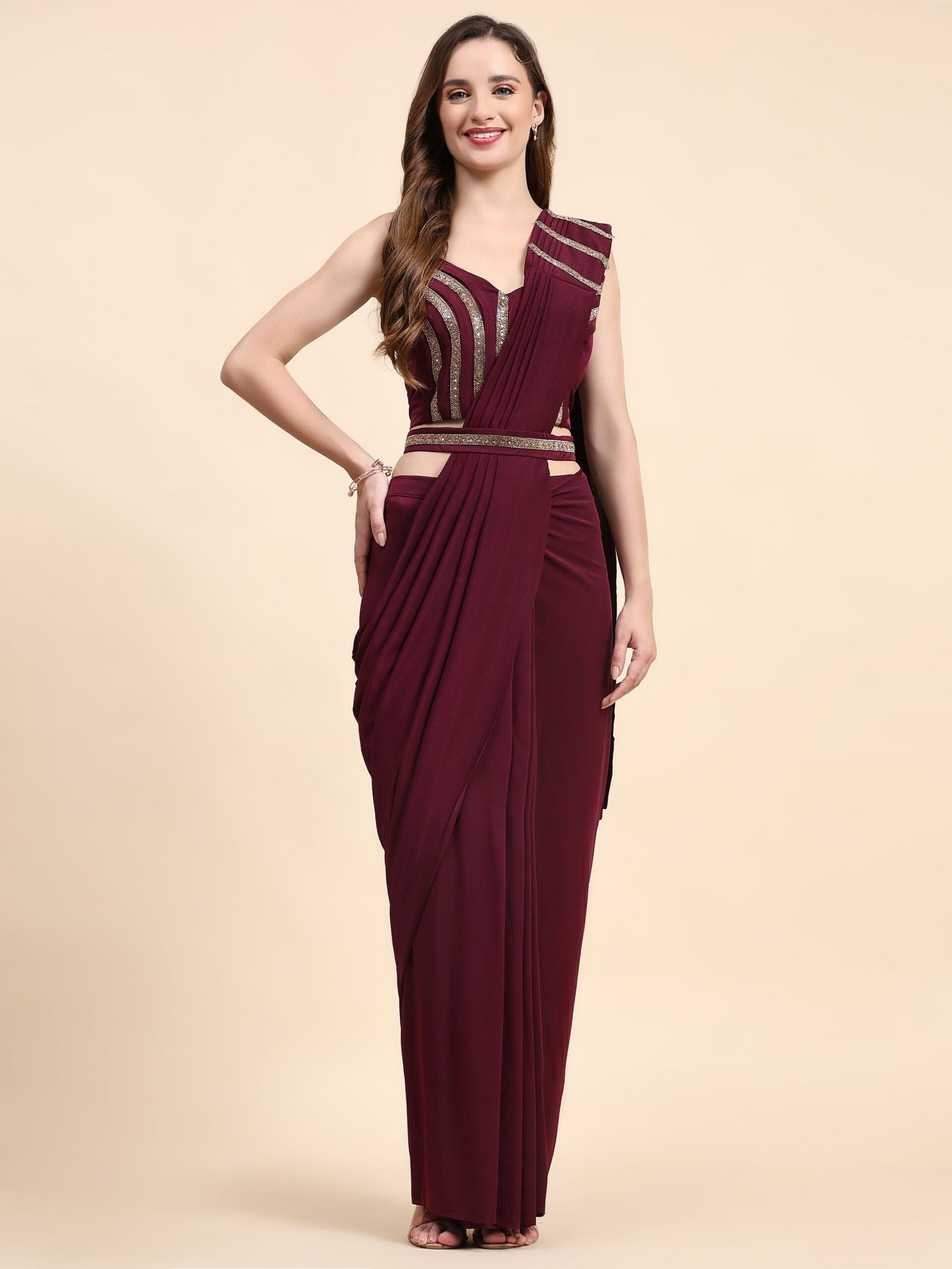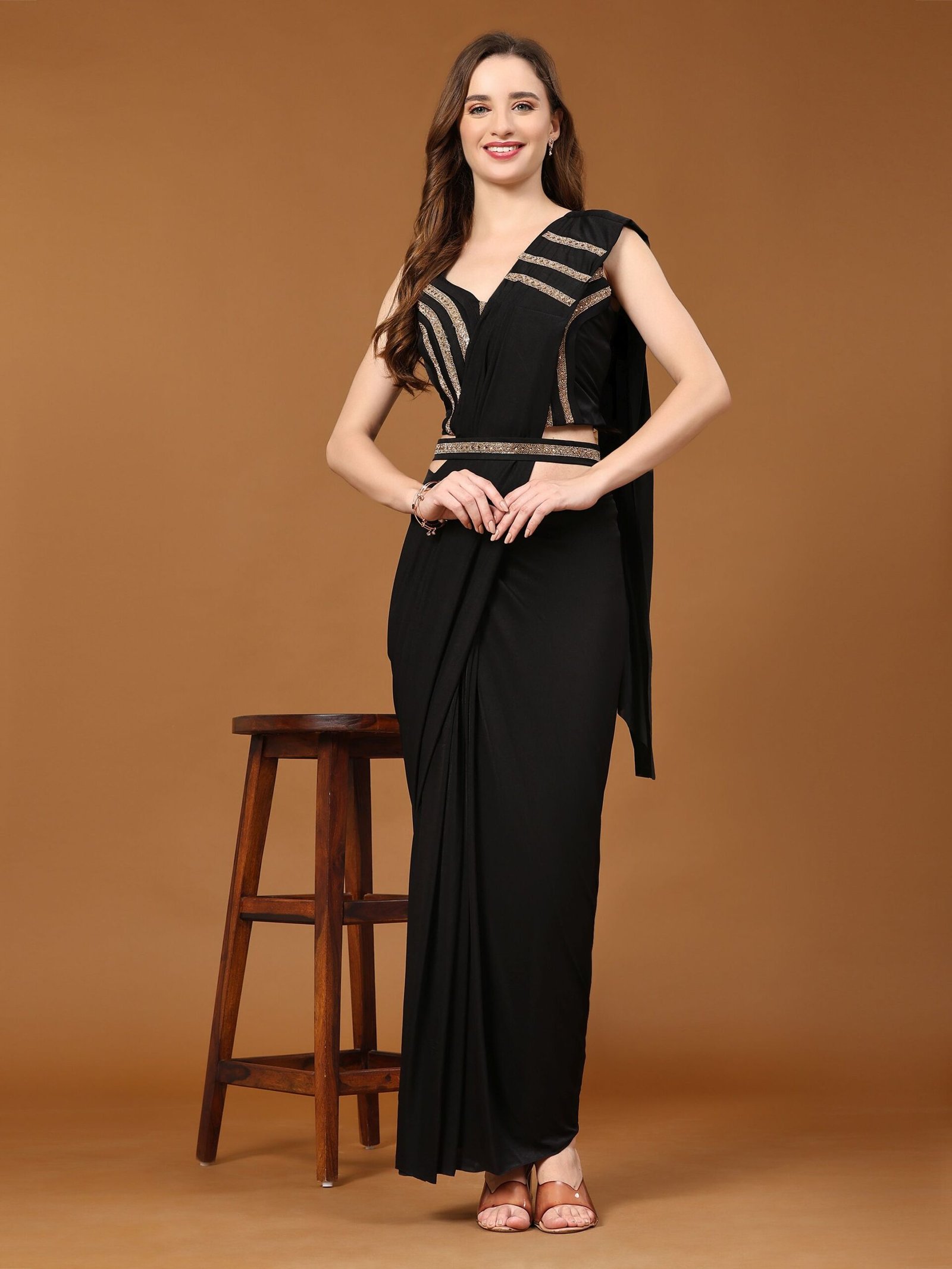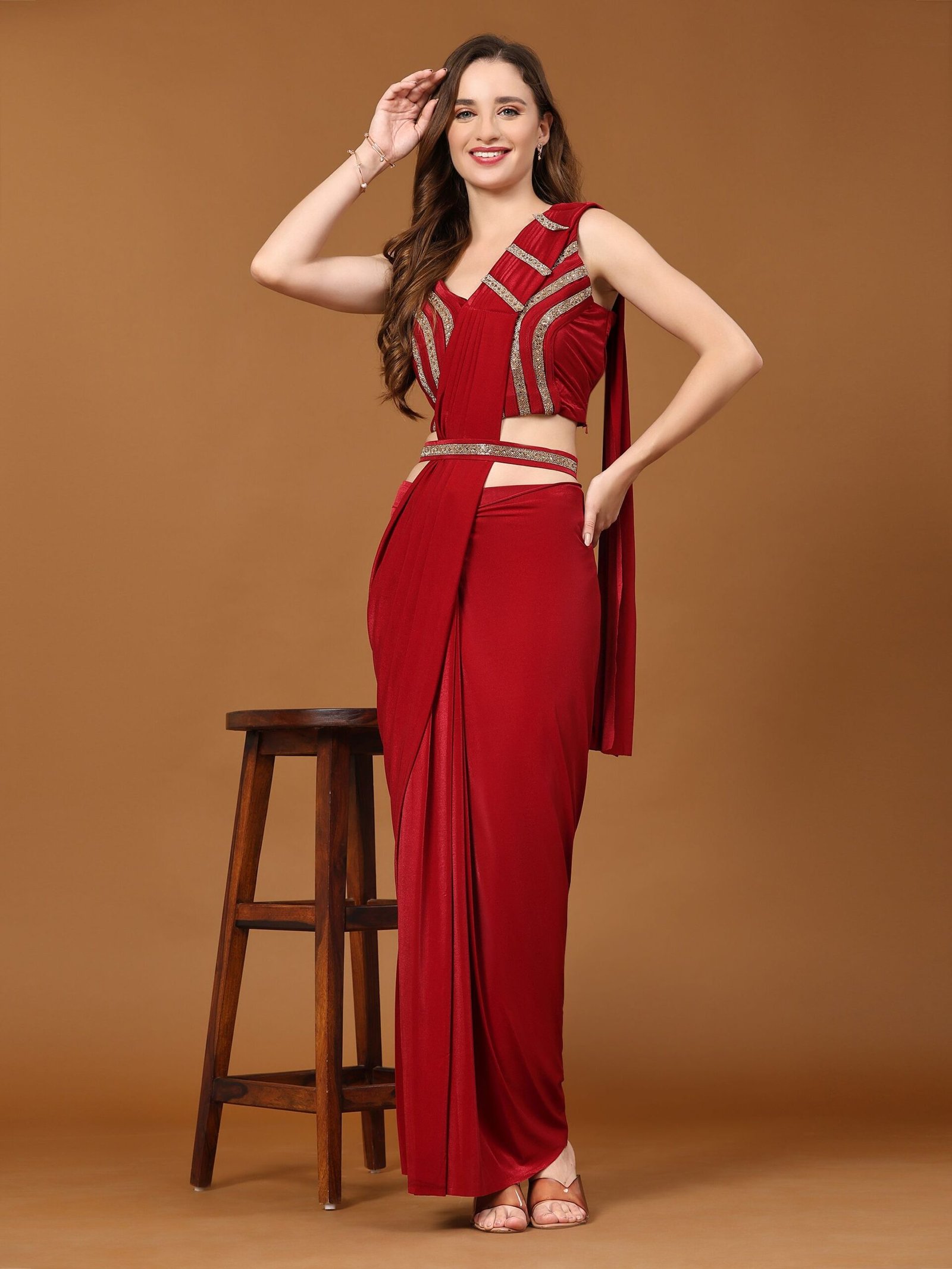Drape Saree For Women, the quintessential Indian attire, have adorned women for centuries, adding a touch of grace, tradition, and sophistication to their presence. Among the myriad styles of sarees, the drape saree stands out as a symbol of timeless elegance. This article explores the allure and significance of drape sarees, delving into their history, styles, and the everlasting impact they have on women’s fashion.
Historical Roots of Drape Sarees:



To truly appreciate the drape saree, one must understand its historical roots. The saree, as an attire, has evolved over thousands of years, with mentions dating back to ancient Indian scriptures. The drape saree, characterized by its unique way of wrapping around the body, reflects the rich cultural heritage of India. Traditionally, women would wear sarees in various regional styles, each carrying its distinct charm. Over time, these styles amalgamated to give rise to the modern drape saree.
Styles of Drape Sarees:
A. Nivi Style:
The Nivi style of draping, originating from Andhra Pradesh, is one of the most popular ways to wear a saree. It involves elegantly pleating the pallu and allowing it to fall gracefully over the shoulder, creating a classic and sophisticated look. The Nivi drape is versatile, suitable for both casual and formal occasions.
B. Bengali Style:
The Bengali style of draping is known for its elaborate pleats and unique way of presenting the pallu. The pallu is often draped over the left shoulder and then brought back to the right side, creating a distinctive look. This style is favored during festive events and traditional Saree ceremonies.
C. Gujarati Style:
The Gujarati drape is recognized by its front pallu, where the loose end is brought from the back to the front, creating a decorative effect. This style is popular in Gujarat and is often seen during Navratri celebrations and Weddings Saree.
The Maharashtrian saree drape, or Nauvari, involves wearing the saree like a trouser, with the pallu gracefully draped over the shoulder. This style is a symbol of strength and is commonly worn during traditional Maharashtrian festivals and events.
Modern Interpretations and Innovations:

As fashion evolves, so does the way saree for women are draped. Contemporary designers have embraced the drape saree, infusing it with modern twists. The concept of pre-stitched or ready-to-wear sarees has gained popularity, making it easier for women to carry the elegance of a saree without the hassle of draping.
Versatility in Occasions:
One of the remarkable aspects of drape sarees is their versatility. Whether it’s a grand wedding, a formal office gathering, or a casual evening with friends, there’s a drape saree style suitable for every occasion. The adaptability of drape sarees makes them a wardrobe essential for women of all ages.
Fabrics and Embellishments:
Drape sarees come in a myriad of fabrics, from traditional silk to lightweight georgette and chiffon. The fabric used is frequently determined by the event and personal preferences. Additionally, embellishments such as embroidery saree, sequins saree, and zari work saree add a touch of glamour to drape sarees, making them a stunning choice for special events.
Conclusion:
In conclusion, the drape saree continues to hold a special place in the hearts of women, embodying the essence of Indian tradition and femininity. Its ability to seamlessly blend history with contemporary fashion makes it a timeless and enduring style. As women continue to embrace their cultural roots while exploring new trends saree, the drape saree stands as a testament to the enduring allure of classic elegance. Whether passed down through generations or donned for a modern celebration, the drape saree remains a symbol of grace, beauty, and the enduring spirit of womanhood.


